Hui-Style Architecture
Ingenuity of Wealthy Huizhou Merchants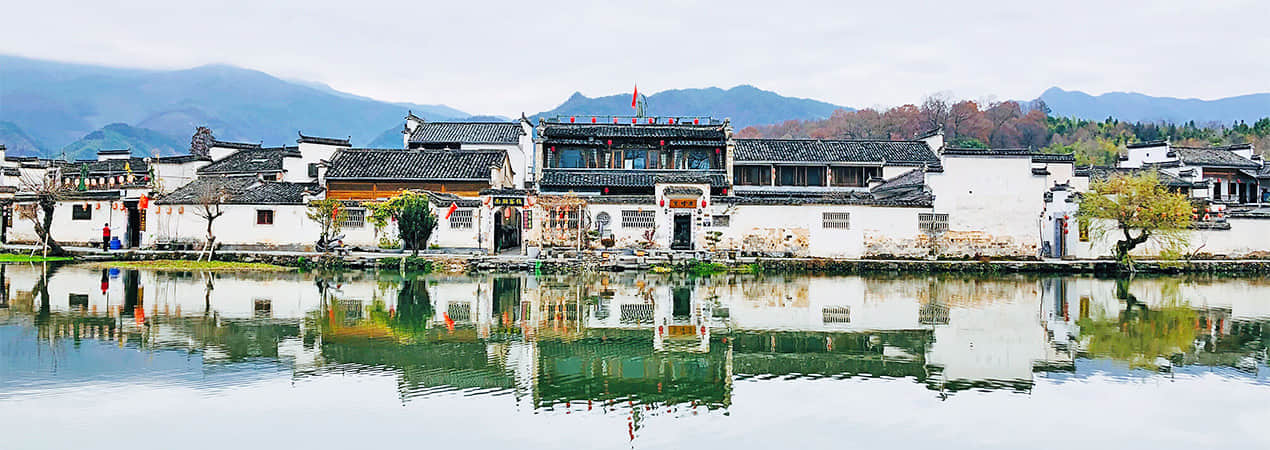
Hui-style architecture, an important branch of the major Chinese ancient architecture, featured black tiles and white walls, wood and brick carving, zigzag flagging, and memorial archways. It is not prevalent only in the Anhui Province, but also in Jiangxi Province and the Western Jiangxi Region. Wandering through such graceful ancient buildings feels like walking into a Chinese ink-wash painting.
You don’t believe it? See the pictures
Hongcun Village
Chengkan Village
How did Hui-style Architecture Develop?
It was created by, and for, the brilliant Huizhou merchants.
Hui architecture developed into a significant building school in the Song Dynasty (960 – 1279CE). During the middle period of the Ming Dynasty(1368 – 1664CE), Hui style buildings developed very fast because the Huizhou merchants were successful businessmen and well-educated. They thrived and dominated Chinese business for more than 300 years in history. According to records, the Huizhou people were engaged in trading tea, salt, paper, ink, silk, cloth, wood, paint, and pottery.
Just how rich were they? As an example, some of the merchants in Huizhou who monopolized the salt business could manage the emperor southern inspection tour. Due to their wealth and elegantly aesthetic culture, the merchants invited skillful craftsmen to design and decorate their houses, ancestral temples, gardens, archways and pavilions, and their aesthetic taste and fortune made a great contribution to Hui-style architecture.
Features of Hui-style Architecture
Hui-style architecture is characterized by the layout of villages that combines with nature, and a simple and aesthetic exterior. Due to the rolling hills and streaming rivers, the villages are usually located near water, or lined up with the hillside along the contour. Winding alleys stretch between high and low houses, and a limpid pool clearly mirrors the buildings and trees lined up beside it.
1. Layout of Hui-style Ancient Residence
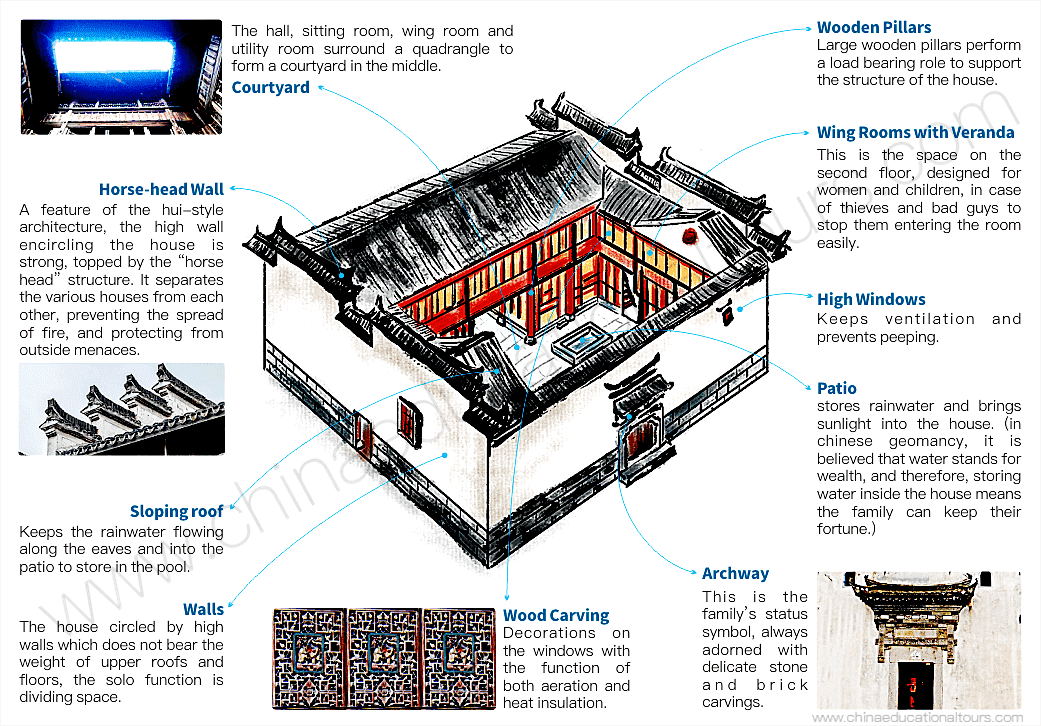
2.Black Tiles and White Walls
In imperial times, the colors that decorated buildings were strictly regulated. Bright colors could only be used in palaces, temples and for government officials. Chinese society had a traditional concept of stressing agriculture and restraining commerce, and doing business seemed to be the lowest social classes. However, a lot of people in Huizhou were sufficiently adept in trading to earn a good living. They chose the black and white colors to convey a simple idea that the way of doing things and businesses should be a clear distinction between black and white, and a trader can also have clean hands to run their business and to lead life.
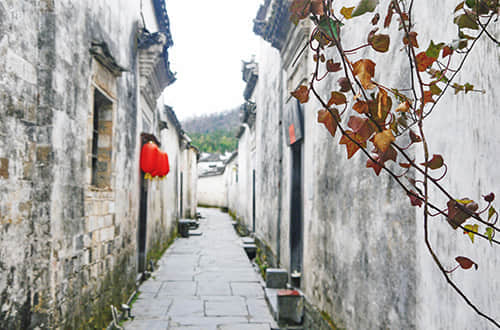
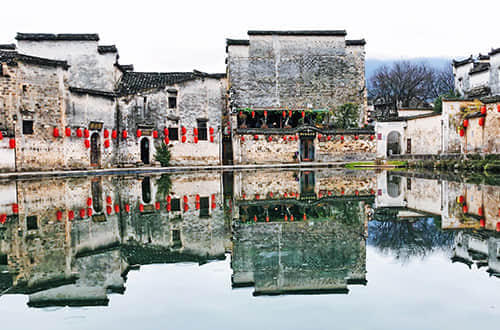
3. Horse-head Wall

The shape of this kind wall is built like a horse head, which is how it gets its name. Most of houses in the village are built with wood, so when a fire occurs, it is easy to make large fire losses. Thus, the ancient Huizhou people built horse-head walls to prevent any fire from spreading, and it is also known as the wind-fire wall, because it also protects from the wind and the rain. The wall usually has two or three tiers, while the one with the most has five tiers that represent house owner’s honorable status.
4. Carvings on Huizhou Architecture
There are three types of Hui carving: stone carving, wood carving, and brick carving.
Stone carving can usually be seen on pillars, corridors, archways and tombs. Much of the materials are black stones from Yi County. Stone carving generally adopts flat carving with images of animals, plants and calligraphy arts. Depending on the hardness of stone, the patterns cannot have as many varieties as wood and brick carving.
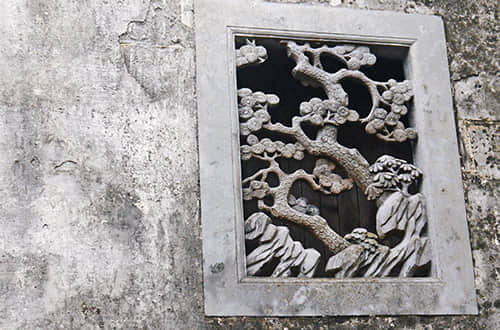
Stone carving on the wall
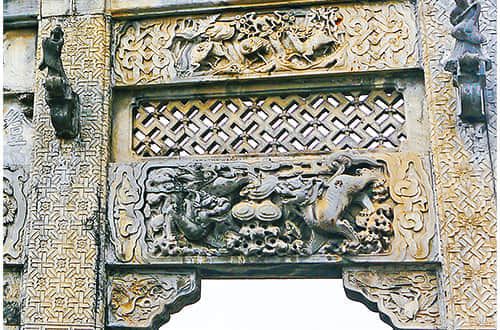
Stone carving on the Archway
Wood carving is normally used to decorate buildings on features such as beams, screens in the garden, window sills, handrails, even beds and chairs. It refers to a wide range of subjects, including figures, landscapes, flowers, animals, insects, fishes and various auspicious patterns. This complicated and refined art was developed from flat to multi-layer carving, which create vivid three-dimensional vision. Its simple color highlights the natural beauty of the texture of the wood.

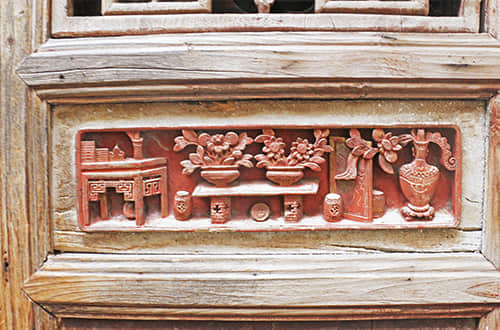
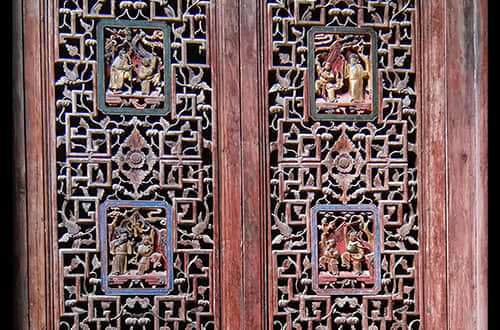
Brick carving is exquisite carving decoration on the black bricks produced in Huizhou. Whether rich or not, people like to use brick carving on the front gates. It is widely used on gates, arches, frames, doorsteps, eaves, and roofs. The theme of brick carving is similar to Wood carving.
Where to see the Hui-style architecture
To visit Hui-style architecture, it is a good choice to go to Xidi Village and Hongcun Village in Yixian County.

OR
Are you eager to begin your Chinese cultural journey?
Drop us a line and we will promptly connect you with our leading China expert!
 Huangshan Tours
Huangshan Tours 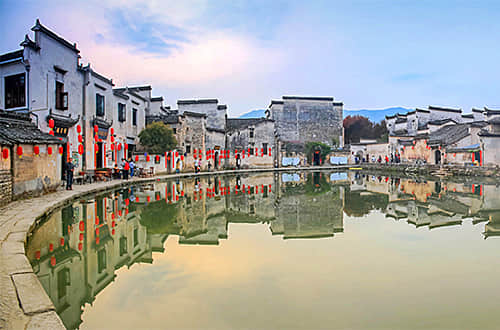 3 Days Classical Huangshan Tour
3 Days Classical Huangshan Tour 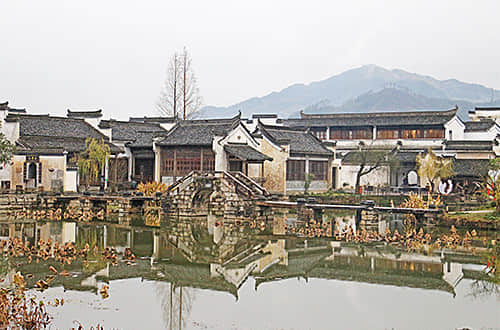 Ancient Hui-culture Study Tour
Ancient Hui-culture Study Tour 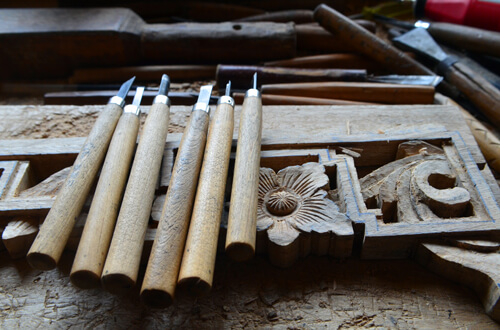 Chinese Woodcarving Art
Chinese Woodcarving Art